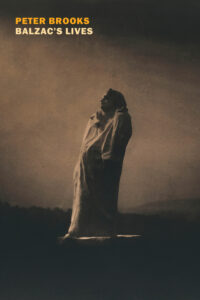
[New York Review Books; 2020]
Ours is a miserable beaten-down world, but I have to say that I stood a little taller and looked out toward what I was sure was a hopeful horizon when, as I prepared for this review, I read the opening line of Honoré de Balzac’s Lost Illusions, which is rendered as follows in the translation I was using, by Ellen Marriage: “At the time when this story opens, the Stanhope press and the ink-distributing roller were not as yet in general use in small provincial printing establishments.”
No grand vision here! None of your history-changing battles, your young women coming of age, your dystopian landscapes bestrode by lone figures who are doomed yet determined. No, no: we’ll leave these scenarios to your Leo Tolstoys, your Jane Austens, your Cormac McCarthys. For Balzac and readers like me as well, nothing pulls you in like a printing press (identified by brand name) and an ink-distributing roller. In a small shop. In the provinces, no less.
Or, actually, not there at all: the author tells us that this astonishing technology hasn’t yet appeared in the place where his novel begins, though we are made to think that it will, and soon, for everything in Balzac is dynamic, pulsing, in play. Life is its own self-replicating force, one which spreads with a velocity matched only by its indifference, and Balzac, by god, is going to chronicle its every peak and pothole if it kills him, which it probably did.
But we’ll get to that later. There are a number of Balzac biographies out there already, and this Peter Brooks’ Balzac’s Lives isn’t one of them. Taken as a whole, Balzac’s works mirror his time, and what Brooks shows us here is the making of that mirror. Following a brief introduction, he devotes each chapter to a principal character in nine of what he considers Balzac’s most illustrative works — The Wild Ass’s Skin, Father Goriot, Lost Illusions, and so on — in effect looking over the novelist’s shoulder as he creates his fictional beings. The result is a more nuanced and intimate portrait than can be found in a conventional biography.
Brooks argues that Balzac’s life is not all that compelling in the first place. The man was no Hemingway. Not for him the bull ring, the epic fight with marlin and swordfish, the whiz of the bullet past one’s ear. No, Balzac pretty much stayed up all night and drank coffee and churned out ninety-plus books, the bulk of which comprise his Comédie Humaine, which means “human comedy” literally but something more like “the variety of human life.” Clearly the title nods to the plenitude described in Dante’s Divina Commedia, though the Frenchman traffics more in ambitious young men from the provinces and jaded aristocrats than in demons and monsters.
La Comédie Humaine’s pedigree also includes The Decameron and The Arabian Nights, both of which are propelled by the constant arrival of new characters, each of whom is the bearer of a story. Every time one of Balzac’s characters appears, he or she is given a background which can range from a few lines to several pages as their creator situates their lives within the life of the nation as a whole. Balzac can’t conceive of representing the world other than through these people-narratives: to understand contemporary France is to tell the story of all its inhabitants. It’s like the census, says Brooks, “but much more fun.”
Of Balzac’s 2,472 characters (an earlier scholar really did count them all), here Brooks chooses nine to follow as they make their way through a fictional world that is, like ours, filled with pain and pleasure, obstacle and reward, saviors and villains, though it’s not always easy to tell which is which. Essentially, his people are learning to read code: in Lost Illusions, for example, young Lucien de Rubempré gets a letter from his would-be lover, but because he is new to love (not to mention that she’s of a higher social stratum than the one he is accustomed to), he misunderstands what she is trying to tell him. He has, in the narrator’s words, “no suspicion of the art with which polite society puts forward a ‘Yes’ on the way to a ‘No,’ and a ‘No’ that leads to a ‘Yes.’”
All bets are off in Balzac’s world. The old rules don’t apply, and that makes him “the first writer truly to seize the meaning of the emergent modern world, its nascent capitalism, its valuation of money above all else, its competition for social and political prominence, promoting the individual above social cohesion.” Regarding money, Henry James once observed that “each particular episode of the ‘Comédie Humaine’ has its own hero and heroine, but the great general protagonist is the twenty-franc piece.” (James also said that Balzac “had little belief in virtue and still less admiration for it.”)
That’s why there are, as in our world, no clear answers, or at least not enough of them. Clarity belongs to an earlier age, the one that ended with the French Revolution and the exchange of a top-to-bottom social structure headed by royalty and built on the backs of the poor for one in which the middle class dominated even as it simultaneously invented and struggled to understand itself.
Key to understanding that change is the distinction Brooks makes between tragedy and melodrama in his 1995 book The Melodramatic Imagination: Balzac, Henry James, Melodrama, and the Mode of Excess, a book, like this one, that is clear, insightful, jargon-free, and overall a genuine pleasure to read. In a nutshell, tragedy is the genre of the royal age: there were good rulers and bad rulers, and regardless of what happened to them, their roles were always sharp-edged and distinct. All that changed as the peerage waned and the middle class bloomed. Who were these new people? They didn’t know themselves, which is why the genre for that world is melodrama, which seeks not to reward and punish but express.
Tragedy lectures. Melodrama just talks — in a world without answers, that’s all it can do. Balzac teed up the ball and kicked it off, and James, to use a metaphor that would have horrified him, tucked melodrama under his arm and ran it into the end zone, where it has prospered to this day. No wonder James called Balzac “the father of us all.”
If, on the surface, melodrama is mere talk, that doesn’t mean it’s without value. In his essay collection A Few Good Voices In My Head, Ted Solotaroff says that a piece of writing is often a writer’s “only way to organize and to some extent comprehend life’s fullness and perplexity.” Surely that’s equally true for readers as well. And not just readers, either: surely anyone who takes the time to look at a painting or listen to music or watch a TV show is organizing their experience and, to use Solotaroff’s modest phrase, “to some extent” comprehending it. To understand “to some extent” is plenty, is it not? What monsters we would be if we understood everything!
When you look up the word “graphomania” in the dictionary, it would only be fitting to see a portrait of Balzac. He was not only obsessed with writing but with correcting everything he had written. He didn’t take very good care of himself. He wrote all night, sometimes at fifteen hours at a stretch, and he was only 51 when he died. “He thought he could write his way out of debt,” says Brooks, “but his corrected proofs, almost always about addition more than deletion, suggest something other than the utilitarian writer. We see instead an inability to write less, a need to develop, to add biographical details and life facts, to carry what he has begun to some utopia of writing where all might be said.”
If Balzac didn’t end up saying everything (who could?), at least we can attribute to him the monumental achievement of being able to see “the solid, unyielding real world, and at the same time to see through it.” That’s why his plots never end with clear victories or defeats but something more like the mixed results that are more familiar to us contemporary readers.
The celebrated end of Father Goriot has his protagonist Rastignac shouting defiantly that he will indeed conquer the fashionable world that has proved indifferent to him. “It’s just you and me!” he says. His cry is often cited as evidence of the rise of the rebel in our culture, but few observers take note of the irony in the novel’s final sentence. It describes Rastignac’s first act of defiance to society, which is to accept a dinner invitation at the home of Madame de Nucingen, a flighty and self-absorbed baroness.
Little wonder that, as Peter Brooks says in his final sentence, “Balzac remains the first and still the crucial guide to the modern world.”
This post may contain affiliate links.








